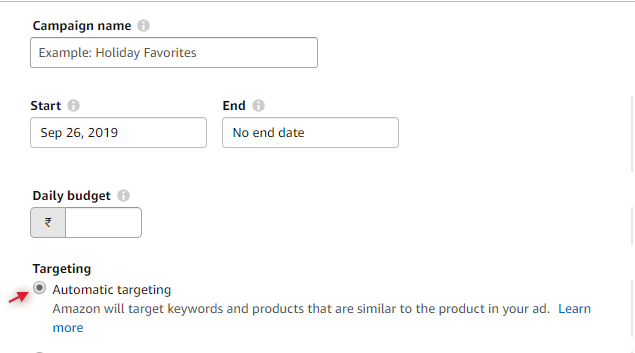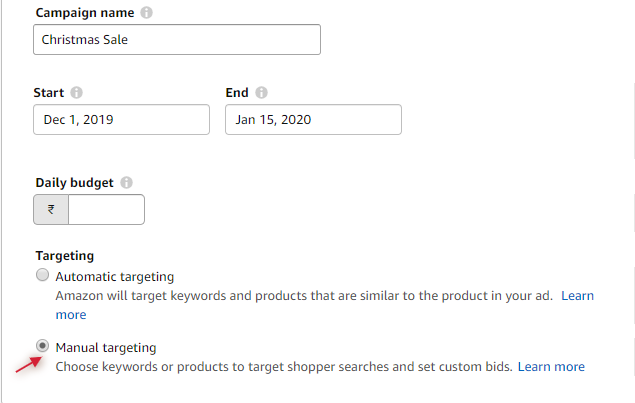While creating an Amazon Sponsor Product campaign, you can choose two available targeting options: Automatic Targeting and Manual Targeting.
Targeting helps you to optimize your advertising campaign which in turn gives you more sales. In this post, we will find out the comparison between Automatic and Manual campaign targeting but before that, let’s understand how do they work:
Automatic Targeting: For auto-targeting campaigns, sellers have to select the products they want to advertise and set a budget for the campaign. The rest of the work is done by Amazon itself. Amazon automatically shows your ads for keywords that match your product category, related products and keywords in your product’s description.

Manual Targeting: For manual targeting campaigns, sellers have to handpick keywords along with the products they want to advertise. Amazon will show your ads only if the shopper’s search query matches any of the keywords in the campaign.

Note: Amazon Ads support two options for manual targeting – ‘Targeting by keywords’ and ‘Targeting by product properties’. In this post, we will consider only the ‘Targeting by keywords’ option. Targeting by product properties are explained in our New product targeting blog post.
Automatic Targeting Vs Manual Targeting: Now, let’s try to understand the difference between Automatic and Manual targeting on the bases of few parameters:
| Comparison Parameter | Automatic Targeting | Manual Targeting |
|---|---|---|
| Initial Setup | Easy to start. A seller needs to select the campaign budget and products to advertise. | A seller needs to add target keywords with appropriate match types while setting up the campaign. It is crucial to select these keywords carefully for the success of the campaign. |
| Bidding | A seller can specify a default bid at the Ad group level. Apart from that, you can bid differently for the four targeting options allowed by Amazon – close match, loose match, complements, and substitutes. Read more about these match types here. | A seller can specify a default bid at the Ad group level. These bids can be overridden by specifying bids at each keyword level |
| Reporting | All the performance metrics are available at the campaign level, ad group level and targeting options level. Amazon also gives search term reports for Auto-campaign. | All the performance metrics are available at the keyword level, campaign level, and ad group level. Search term reports are also available to measure campaign performance. |
| New Keyword Discovery | Amazon’s machine learning algorithm will make sure that your ads are targeted for all the search queries related to your products. | A seller will have to actively discover and add new keywords to expand the reach of the campaign. |
| Irrelevant Traffic | If the product is categorized correctly and the description is accurate, it is less likely possible for your campaign to show for irrelevant traffic. | If the keyword selection is wrong or if the keywords are too broad, they may attract irrelevant traffic. This can be avoided by selecting keywords carefully and/or using stricter match type when in doubt. |
| Poorly Performing Traffic | A seller needs to be aware that not all relevant traffic will convert. Moreover, as there is no keyword-level bidding, you end up bidding the same for high and low converting keywords. | Poorly performing keywords can be easily identified by analyzing keyword performance reports. Sellers can lower bid for such keywords to improve campaign performance. |
Take Away: Both the targeting options have their own benefits. We recommend that one should run the auto-targeting campaign with a limited budget to discover new keyword themes. At the same time run a manual targeting campaign with all the good converting keywords (discovered from auto campaigns). In both types of campaigns, it is mandatory to monitor search term reports and block poorly performing traffic to maximize the profit.
For large campaigns, you may use automation tools like Karooya to discover negative keyword themes from search term reports.
Related Links:





Stop the wasted ad spend. Get more conversions from the same ad budget.
Our customers save over $16 Million per year on Google and Amazon Ads.